Experimental gardeners and gardeners are known that, engaged in the cultivation of cultivated plants, can not do without the introduction of special feeding. Today, drugs from the superphosphate group are widely used in agriculture, as an effective nitrogen-phosphoric fertilizer. There are various ways, dosages and deadlines for the introduction of superphosphates. The content in the fertilizer of valuable chemicals, microelements and minerals allows for plants a full, balanced power. Such a feeder, during the active growth of the plant, will later pay off by an excellent harvest. The article presents all questions regarding the use of complex mineral fertilizer - superphosphate.

The value of phosphorus in nature
Phosphorus is a necessary and valuable element for any plant. Full-fledged nutrition of plant culture, especially young plants, is impossible without this chemical element or its compounds. Phosphorus also takes part in photosynthesis and energy processes at plants cellular level. The soil contains about 1% phosphorus, its chemical compounds - and is less. Therefore, it is possible to fill the disadvantage of this element only by the method of making the appropriate fertilizer with the content of phosphorus. The leading position occupies a comprehensive high-performance fertilizer - superphosphate.
Fertilizer Superphosphate, general characteristics
Superphosphate is a nitrogen-phosphoric mineral fertilizer. The composition includes necessary for the growth and development of plants, nitrogen and phosphorus, and the latter is the main active substance. The preparation also contains a number of additional valuable trace elements: sulfur, magnesium, calcium, potassium and others.
So, calcium contributes to the neutralization of acidic soils. Magnesium is valuable when growing potatoes. Sulfur is an indispensable trace element for grain, passenger and legume crops.
The spectrum of the positive effects of this fertilizer on plant cultures is quite wide and provides:
- improvement of metabolism;
- an increase in yield and its quality indicators;
- development of the root system, tubers;
- acceleration of growth and plant development;
- acceleration of flowering and fruiting;
- protection against diseases;
- braking oxidative processes in the soil;
- deceleration of aging plants;
- ensuring the supply of plants;
- improve the taste quality of fruits.
Physical and chemical properties of superphosphate
This mineral fertilizer is produced in industry the form of small granules or powder.
In most cases, the powder form of fertilizer is less effective, with the exception of the compost preparation process. This is due to the best dissolution rate and a rapid connection with other components. In addition, the powder preparation is cheaper than granulated. This is perhaps all the advantages end.
Superphosphate granulated is produced in the form of granules with a size of 1-4 mm. This form ensures the physical properties necessary in agrochemistry: retains the crushing and prevents italing, the competence of the product. In the process of granulation, phosphoric acid is neutralized and, thus, the superphosphate is ripening and dried. As a result, in the resulting fertilizer, slightly (1-1.5%), i.e. Not critical, the content of phosphoric acid is reduced. The superphosphate also includes an insoluble substance - gypsum (calcium sulfate).
The main component of the formula is phosphorus, ranges from 20% to 50% of the total. An essential factor for the practical use of mineral fertilizer is the presence of phosphorus in the formula of water-soluble oxide. Due to the interaction of oxide with water, phosphorus is much faster to the roots of plants, providing them with the necessary nutrients.
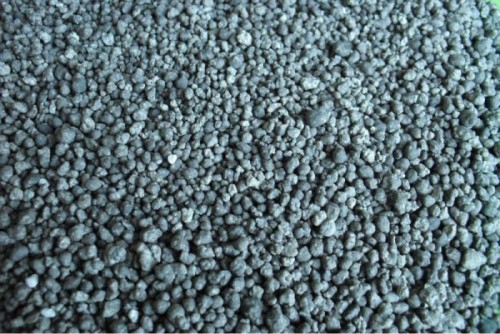
Obtaining superphosphate
The main raw materials for obtaining fertilizer are minerals of natural origin, formed in the process of mineralization of bones of dead animals.
Also, as the source product, Tomaschlaki, formed in the production of steel, is used.
The chemical element is phosphorus, it is rare in nature. In most cases, it is part of minerals and organic substances.
Superphosphate is obtained as a result of the decomposition of natural phosphorites. First, on the basis of phosphoric raw materials, phosphoric acid is formed, which is separated from the sediment and evaporate. Then, the resulting concentrated phosphoric acid reacts again with calcium phosphate. As a result of indicated chemical reactions, the necessary product is obtained.
CA. 3(PO. 4)2 + 3h. 2SO. 4 + N. 2Oh → 2h. 3PO 4 + Caso. 4 x 2N 2O
CA. 3(PO. 4)2 + 4h. 3PO 4 + N. 2Oh → 3CA (H 2PO 4)2 X N. 2O.
Using superphosphate
Signs of phosphorus lack
In order to understand when additional fertilizer intervention is necessary, we denote typical external signs of phosphorus lack at the plant:
- the leaves become a "rusty" color;
- the leaves acquire dark green color with a blue tint;
- on the reverse side of the sheet plate, violet shades appear;
- in the middle of the root plates, dark spots appear.
These features in plants most often coincide with a decrease in the temperature regime that slows down the process of absorption of phosphorus. If the temperature did not increase and characteristic signs of phosphoric "hunger strikes" did not disappear - superphosphate is introduced into the soil. In such cases, the use of fertilizer completely corrects the situation for the better. In order to prevent such troubles, it is better to conduct advanced prophylactic superphosphate superphosphate.
Types of Soil
This mineral fertilizer is used on various, by type, soils. Due to the fact that phosphorus is not fixed in the soil, the plants get it in the right amount. The most efficient use of superphosphate for alkaline and neutral soils. In the case of increased soil acidity - use it better only with a high-quality agrochemical. This is due to the fact that some unscrupulous manufacturers add extraneous chemical mixtures capable of iron or aluminum phosphates under an acidic reaction. Data connections, alas, cannot be available for the plant.
With increased soil acidity, before making superphosphate, it is necessary to treat it with wood ash or limestone (500 ml of lime or 200 g of ash on M 2 soil). The soil deoxidation process passes an average of 1 month, after which it is possible to enter fertilizer.
Terms of use of superphosphate
Agrochemist has long lasting time. Phosphorus is gradually absorbed by the plant, and sucks it out of the soil as much as it is necessary. The process will take place until fertilizer ended in the soil. You can independently calculate the time of action of the mineral complex so that at the end of the validity period, bring new portions.
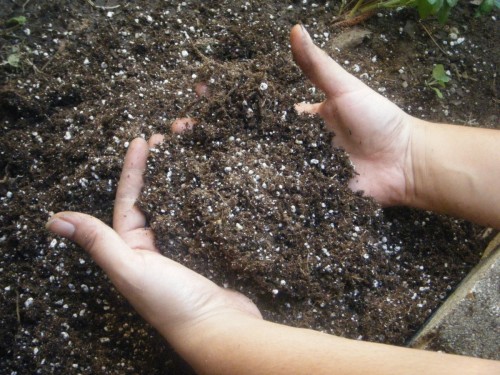
Methods of application
There are several ways to make superphosphate:
- Making superphosphate in the wells (rows).
- Making fertilizer under the step.
- Scattering on the surface of the soil.
- Liquid feeding.
- For compost preparation.
The introduction of nitrogen-phosphoric fertilizer under the rescope in the autumn period is the famous agrotechnical admission. If autumn is planned to hold the limestation of the site, the feeder is better to transfer to the spring. This is explained by the fact that substances contained in these chemicals are based on one calcium basis. Superphosphate is an acidic salt, and the lime is carried out in order to reduce the acidity of the soil. Thus, while simultaneously making superphosphate and lime, we obtain mutual neutralization of properties and unwanted soil salinization.
The opposite process is the acidification of soils - occurs while making superphosphate and urea, which also negatively affects the quality of the soil and development of plants.
Combining superphosphate with potash fertilizers, on the contrary, is welcomed and recommended for better assimilation of all elements contained in them.
Popular among gardeners Applying powder superphosphate for compost preparation. Thus, all trace elements are translated by bacteria in a form, comfortable for assimilation by plants. It is enough to simply switch the prepared compost piles of superphosphate powder at the rate of: 100 g of fertilizer per 100 kg of compost.
Fertilizer's application directly to the prepared rows is considered a fairly efficient and rational way.
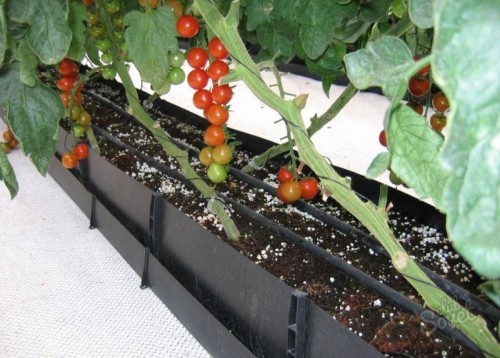
In summer, it is more effective to carry out the superphosphate prepared solution, the so-called exhaust. In soluble form, all the necessary chemical elements are easily absorbed by cultivated plants.
The following varieties of superphosphates are distinguished:
- Simple powder (monophosphate). White-gray powder containing up to 20% phosphorus oxide. Observing the necessary level of humidity during storage, the powder is practically not lucked. It has narrow-dimensional efficiency than more new types of fertilizers. Low cost ensured its widespread use in agriculture.
- Simple granular superphosphate. It is obtained on the basis of simple monophosphate, the method of moisturizing, followed by granulation. This form of release is most convenient to apply and storing the drug. This type of superphosphate contains a greater amount of phosphorus oxide (about 50%) and calcium sulfate (30%). Provides full nutrition of plant crops.
- Double granulated superphosphate. The composition includes, soluble in water, highly concentrated calcium monophosphate. Economically advantageous species, due to the lack of additional ballast substances in it. Well dissolved in water.
- Ammonized superphosphate.In addition to ammonium, the preparation is saturated with gray (12%) and potassium sulfate (50%). Differs good solubility in water. Used for oilseeds and cruciferous crops that need additional sulfur administration.
- Granulated superphosphate with humate. A mixture of superphosphate with phytoosporinic mortar - humats.
There are many other varieties of superphosphates, depending on the addition of specific trace elements: Magnesian, boric, molybdenum.
Using one or another type of drug, you must carefully read the instructions for use. Each superphosphate has its own characteristics and scope.
Consider more two main types of superphosphate: simple and double.
Simple superphosphate
Fertilizer is not a concentrated nitrogen-phosphorus mixture in a ratio of 3:10, respectively. The phosphorus concentration ranges up to 20-25%, nitrogen - 6-7%. Additionally, it is saturated with gray (up to 10%) and calcium sulfate (up to 40%). Complex mineral fertilizer - simple superphosphate - is obtained based on apatite or phosphorite. Under the influence of sulfuric (sulphate) acid, the main raw material for superphosphate decomposes, with the formation of calcium phosphate.
There is both in the form of powder and in the form of granules. Simple superphosphate is preferable for fertilizer sand, samp and podzolic soils. Recommended for the use of plants in need of additional diet of sulfur: bean, cruciferous, cereal, bulbous. It has favorably affects the growth and development of potatoes, carrots, beets, radish, flax.
It should be noted that the superphosphate is simple - by little solvent in water, and phosphorous containing in it is difficult to digest. It is often used as an additive for compost preparation.
Despite the designated disadvantages, the drug is widely used by gardeners and gardens due to the price available.
Superphosphate instructions
Simple superphosphate, it is possible to feed the plants in the spring, and in the fall. Most often, used for fertilizer of vegetables and fruit trees. The fertilization rate rate is 40-50 g / m² for treated lands, and 60-70 g / m² - for sites actively involved in crop rotation (garden, cottage). An indicated dosage is the same for any season and implies fertilizer to a solid way. In addition, the dosage may vary slightly depending on the type of culture and soil, which is processed. If the soil is poor and not nutritious, it is better to exceed the dosage of fertilizer by 20-30%.
Examples:
So, when planting a young seedling of fruit tree, about 500 g of agrochemism contribute to the pit. For adult trees, it is recommended to use 40-60 g per unit. Perform these manipulations at the end of the flowering plants.
If the feeding is made in the closed soil (greenhouse, greenhouse), 80-90 g / m² of the treated surface followed by the soil.
For episodic (one-time) feeding of tomatoes, potatoes take superphosphate, at the rate of 20 g / m² of continuous contribution.
Under vegetable crops and greens, simple superphosphate are recommended to take 60 -70 g / m² of soil. Dosage double superphosphate is two times less.
The most common methods for making fertilizer: under the poppill or sputtering on the surface of the soil. Before performing the work, you must carefully examine the instructions on the packaging and comply with the dosage presented there.
Norms vary depending on the type of soil, its fertility and the number of fertilizers earlier.
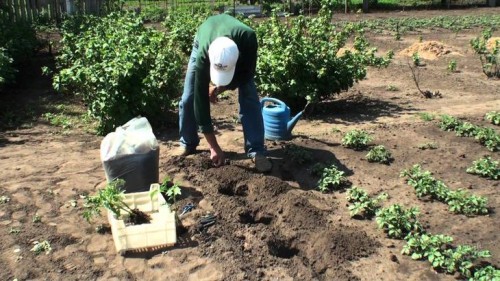
Double superphosphate
Double superphosphate contains twice as much phosphorus (50%) and nitrogen (15%) than simple. It is obtained in the process of decomposition of ground natural phosphate phosphoric acid.
The easily disabled form of phosphorus allows for full nutrition to plant cultures. Fertilizer is also enriched with gray (6%), calcium sulfate (gypsum) is missing. Produced in granular form, it is considered more transportable and convenient to use. This complex nitrogen-phosphoric fertilizer is perfectly soluble in water. The feeding of this fertilizer is carried out early in the spring or in the fall, so that all chemical elements are freely absorbed by the soil and diverged along the surface of the Earth.
Additionally, it is recommended to water a solution of dual superphosphate, plants that lack phosphorus. Just like simple superphosphate, suitable for various types of soil.
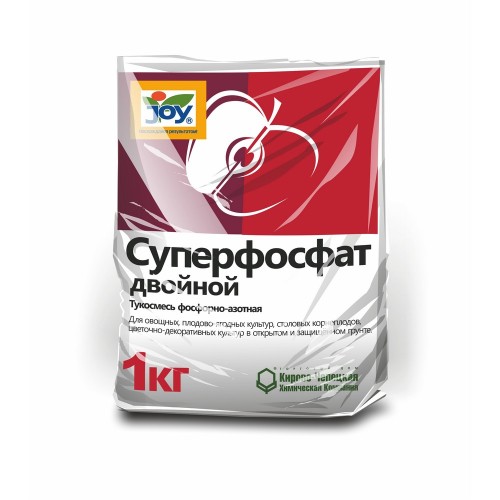
Instructions for the use of dual superphosphate
Superphosphate double, as well as simple, has two main reception: in spring (before the start of the seating) and in the fall (at the end of the harvest). Similar seasonal feeders provide for the required period of time for the absorption of phosphorus in the soil, followed by maximum benefit for the growth and development of plants. Spring feeding is considered fundamental. Periodic watering after making mineral fertilizers will provide better solubility and, consequently, the digestibility of plants.
To ensure the uniform distribution of dual superphosphate on the site, recommend using a grain seeder and a plow. This method is suitable only for the granulated form of superphosphates. Manual scattering the granules will be less efficient, while the use of a plow will provide fertilizer delivery closer to the root system of cultures.
The most efficient use of dual superphosphate with other fertilizers: nitrogen-potassium and potash.
Examples:
For the fertilizer of greenery and young seedlings of vegetables take 30-40 g / m² of double superphosphate. That is, twice as fewer than simple superphosphate.
In the well when planting potatoes, 3-4 g of the drug are brought.
When feeding vegetable crops, rootproofs take an average of 15-20 g / m² of fertilizers, in greenhouses and greenhouses the dosage will be about 80 g / m².
In the case of depleted soils, the dosage is exceeded by 20-30%.

Compatibility with other fertilizers
- Simple powder suphosphate most often combined with nitrogen fertilizers.
- Granular and double superphosphate is effectively combined with potash feeding.
According to the instructions for use, it is impossible to bring superphosphates simultaneously with ammonium nitrate, urea and chalk. The interval between the specified feeders should be at least one week.
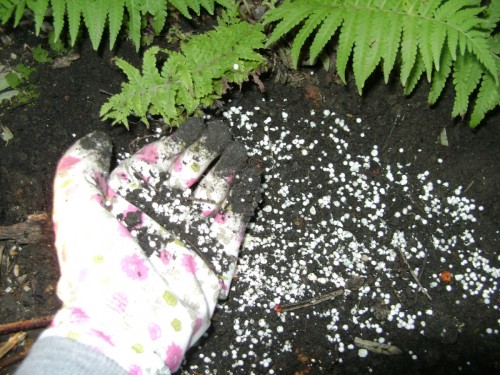
Preparation of superspat solution
It is known that in a liquid form, superphosphate is easier and faster absorbed by roots of plants.
Therefore, more often, the spring root feeder seedlings of vegetables is carried out by an aqueous solution of superphosphate. How to solve the superphosphate correctly, if it is known that phosphorus is not soluble in simple water? To do this, ensure water heating to the boiling point. Take 20 tbsp. Granulated superphosphate and pour 3 l boiling water. It is better to leave the obtained container in a warm place, periodically stirring. After about a day, the maximum dissolution of all components will occur, with 100% dissolution to achieve almost impossible. This solution is basic for the preparation of basic fertilizer in liquid form. To make it, take 150 ml of a concentrated base solution on 10 liters of water, add 20 ml of liquid nitrogen fertilizer and 0.5 liters of grinding wood ash. Adding nitrogen tuk contributes to the best absorption of phosphorus. Tomatoes and other garden crops in the growing season are pulled by a ready solution of superphosphate. Nitrogen is almost immediately absorbed by the plant, and phosphorus absorbed from the soil gradually, for several months. Thus, the extractor from superphosphate is an ideal feeder for garden and garden crops with a long effect of the aftermath.
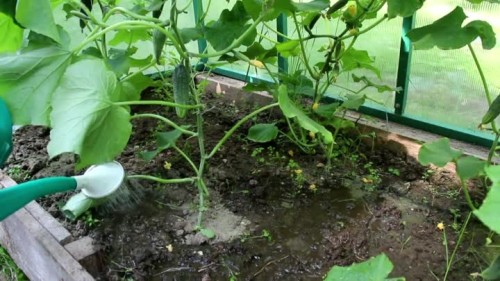
Application of superphosphate for private plants, examples
Potato
This culture is very favorably perceives nitrogen-phosphoric fertilizer - superphosphate. It makes it in the spring, 3-4 g of granules in a well or 20 g / m² throughout the plot. Since phosphorus improves the development of the root system, in this case, tubers, yield and product quality improves at times.
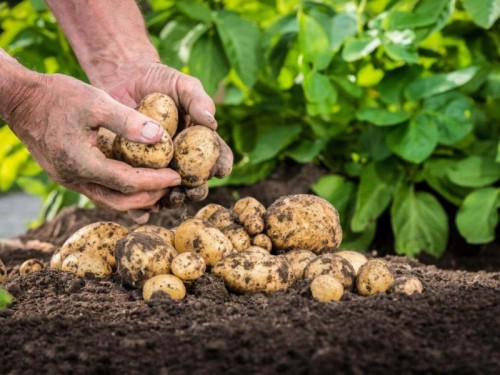
Tomatoes
The first introduction of the superphosphate is carried out when landing with grated (20 g per plant), the following - when they are blooming. Moreover, fertilizer is distributed, slightly stirring with the upper layer of the soil, approximately at the level of the root system of the tomatoes. Saturation by phosphorus of tomatoes contributes to the effective formation of fruits. And to give tomatoes a pleasant sweet taste will help the use of superphosphate with a large content of potassium.
Corn and sunflower
These cultures are in oppression with the direct contact of seeds with superphosphate. Therefore, for them we need a soil layer between fertilizer and seeds, provided that low doses of fertilizer.
Cereals, vegetable, hemp, flax
Excellent perceived granular mineral feeding, so it is mixed with seeds immediately before planting.
Summing up, it can be concluded that the mineral complex is superphosphate - you need almost all cultural plants and is applied on different types of soil. Modern agriculture is impossible to imagine without making chemical fertilizers. Permanent agrotechnology and cultivation of cultures for a long time in one place, impoverish and deplete the soil. The only way to preserve the fertility of the Earth is to use the respective fertilizer complexes. After application, the superphosphate is not washed out of the soil, has a long afternoon, effectively affects the growth and development of plants, "such versatility made it the most popular among the other feeding. And the full, balanced nutrition of plant culture will definitely affect its high yield.

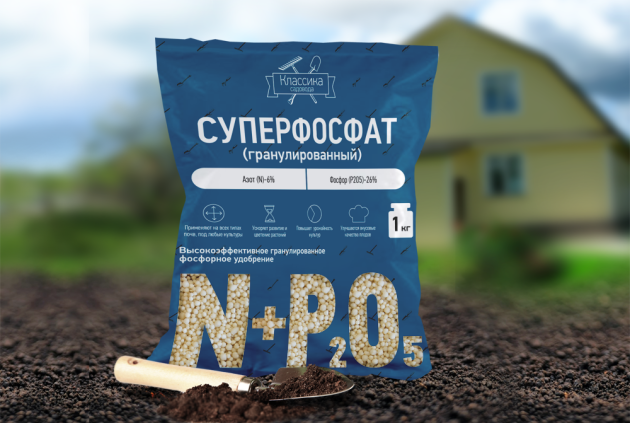
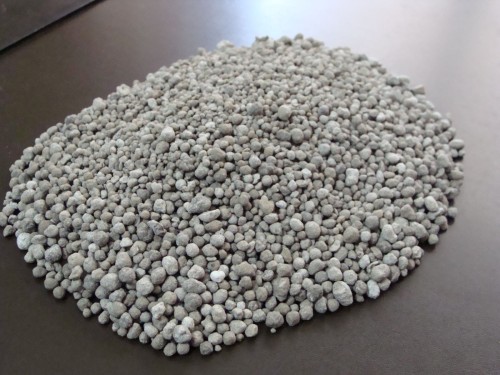
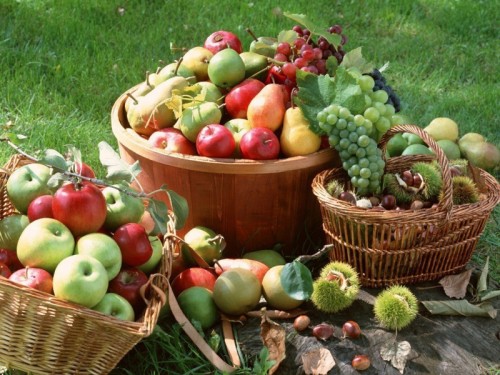
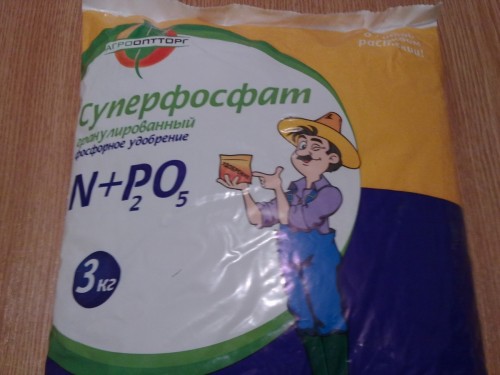
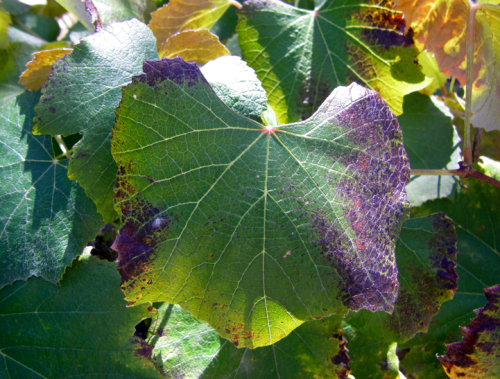
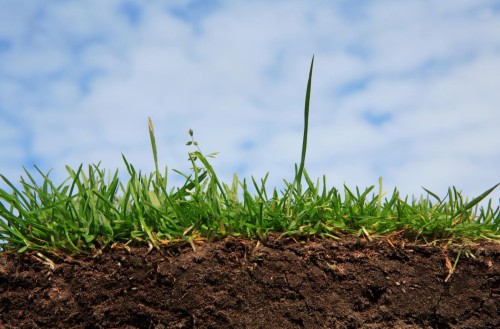
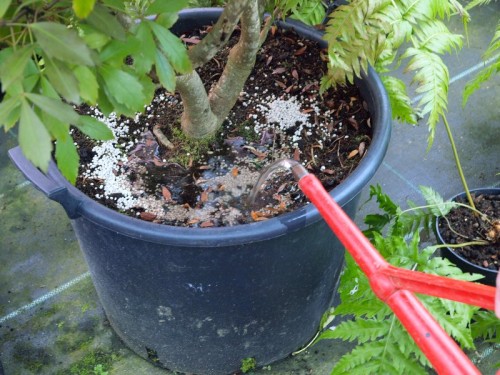

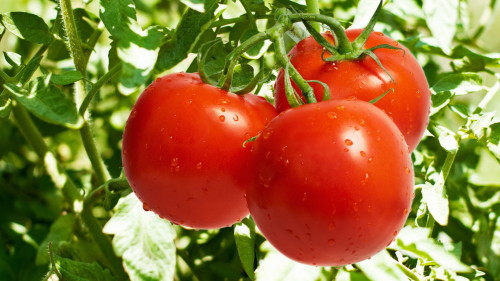
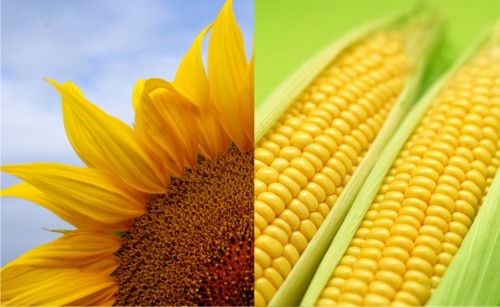
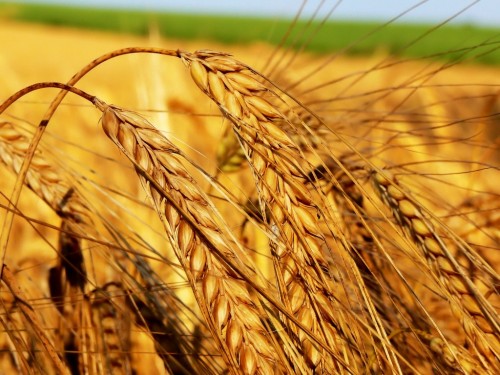












 Start a discussion ...
Start a discussion ...